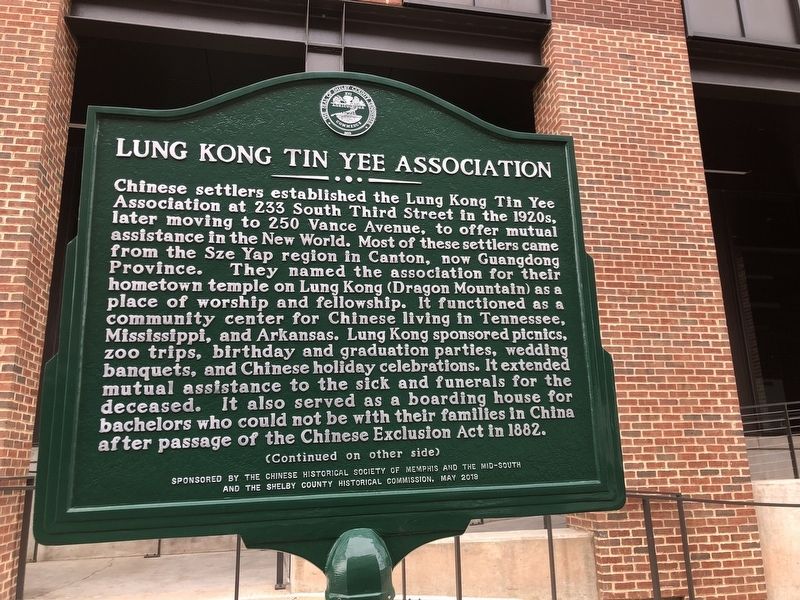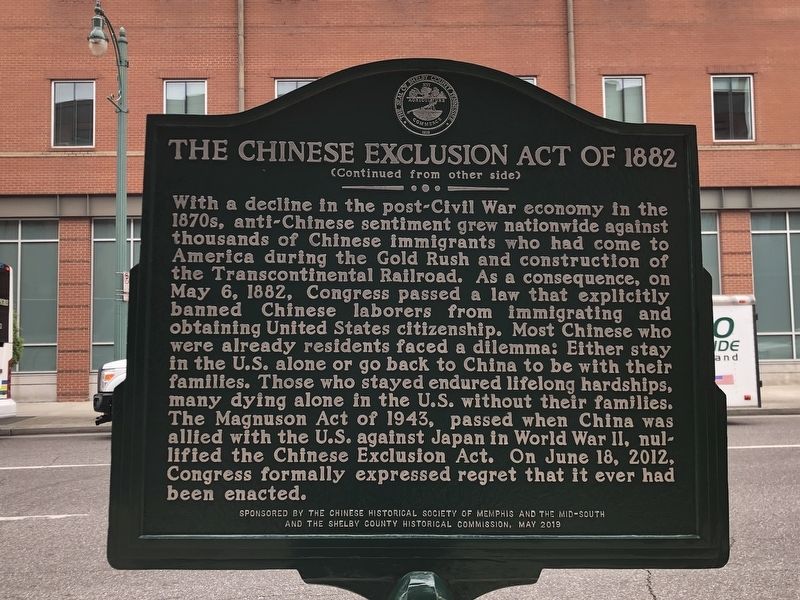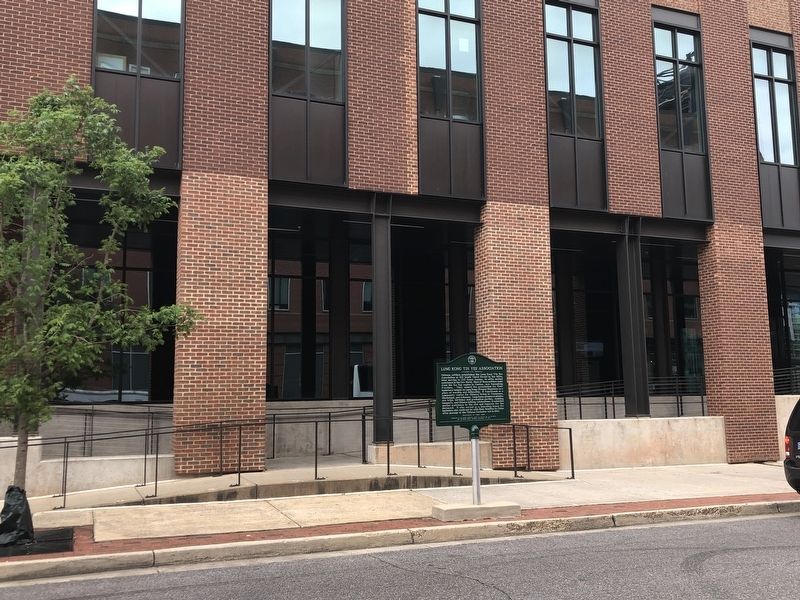Downtown Memphis in Shelby County, Tennessee — The American South (East South Central)
Lung Kong Tin Yee Association / The Chinese Exclusion Act of 1882
Inscription.
Lung Kong Tin Yee Association Chinese settlers established the Lung Kong Tin Yee Association at 233 South Third Street in the 1920s, later moving to 250 Vance Avenue, to offer mutual assistance in the New World. Most of these settlers came from the Sze Yap region in Canton, now Guangdong Province. They named the association for their hometown temple on Lung Kong (Dragon Mountain) as a place of worship and fellowship. It functioned as a community center for Chinese living in Tennessee, Mississippi, and Arkansas. Lung Kong sponsored picnics, zoo trips, birthday and graduation parties, wedding banquets, and Chinese holiday celebrations. It extended mutual assistance to the sick and funerals for the deceased. It also served as a boarding house for bachelors who could not be with their families in China after passage of the Chinese Exclusion Act in 1882.
The Chinese Exclusion Act of 1882 With a decline in the post-Civil War economy in the 1870s, anti-Chinese sentiment grew nationwide against thousands of Chinese immigrants who had come to America during the Gold Rush and construction of the Transcontinental Railroad. As a consequence, on May 6, 1882, Congress passed a law that explicitly banned Chinese laborers from immigrating and obtaining United States citizenship. Most Chinese who were already residents faced a dilemma: Either stay in the U.S. alone or go back to China to be with their families. Those who stayed endured lifelong hardships, many dying alone in the U.S. without their families. The Magnuson Act of 1943, passed when China was allied with the U.S. against Japan in World War II, nullified the Chinese Exclusion Act. On June 18, 2012, Congress formally expressed regret that it ever had been enacted.
Erected 2019 by Chinese Historical Society of Memphis and the Mid-South • Shelby County Historical Commission.
Topics. This historical marker is listed in these topic lists: Fraternal or Sororal Organizations • Government & Politics • Immigration. A significant historical date for this entry is May 6, 1882.
Location. 35° 8.3′ N, 90° 3.155′ W. Marker is in Memphis, Tennessee, in Shelby County. It is in Downtown Memphis. Marker is at the intersection of South B.B. King Boulevard (U.S. 64/70) and Lt. George W. Lee Avenue, on the left when traveling north on South B.B. King Boulevard. Touch for map. Marker is at or near this postal address: 145 S BB King Blvd, Memphis TN 38103, United States of America. Touch for directions.
Other nearby markers. At least 8 other markers are within walking distance of this marker. The Blues Trail From Mississippi to Memphis (within shouting distance of this marker); Beale Street Historic District (about 400 feet away, measured in a direct line); Hooks Brothers Photography
(about 500 feet away); Beale Street #3 (about 500 feet away); Beale Street #4 (about 600 feet away); Ida B. Wells (about 600 feet away); Benjamin Franklin Booth (about 600 feet away); Pee Wee Saloon (about 600 feet away). Touch for a list and map of all markers in Memphis.
Credits. This page was last revised on April 28, 2023. It was originally submitted on April 28, 2023, by Duane and Tracy Marsteller of Murfreesboro, Tennessee. This page has been viewed 165 times since then and 77 times this year. Photos: 1, 2, 3. submitted on April 28, 2023, by Duane and Tracy Marsteller of Murfreesboro, Tennessee.


